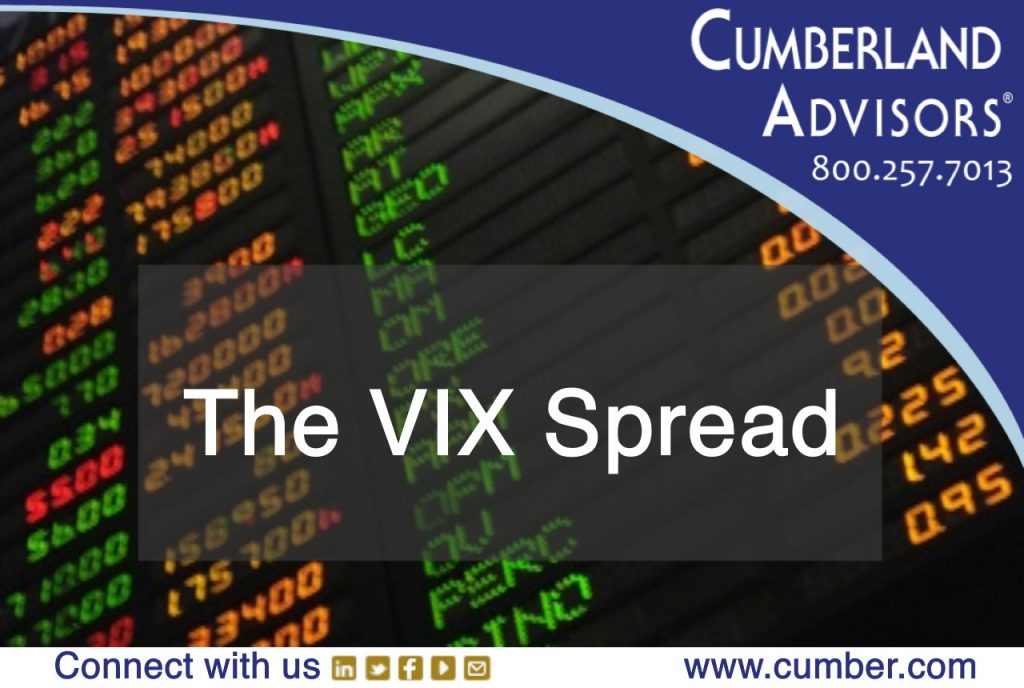The S&P 500 dropped 11.5% the week before last week, the fastest correction in its history. The Dow Jones Industrial Average had two 1000-point drops in that week; the Dow also had four days with 1000-point intraday swings in the past two weeks, making it six out of ten trading days with 1000-point movement on the Dow.
It was not surprising to see a sharp rise in the volatility index, VIX, at the same time – the VIX touched 54 on Friday, then closed above 40 for the week. Chart 1 shows that the VIX does not fly above 50 often: There have been only 71 days where the VIX rose above 50 in its history, dating back to 1993. Most of the 72 events occurred in 2008 and 2009; the only exceptions were August 24, 2015, when a Chinese currency devaluation caused a 1000-point drop on the Dow at the market open, and February 6, 2018, when the Dow plunged more than 1,500 points during the prior intraday. Evidently, 50 on the VIX is alarming and typically accompanied by deep sell-offs. But as investors, should we buy or sell when we observe such heightened volatility?

The VIX was relatively benign ahead the coronavirus sell-off. As we entered the late phase of the longest bull market in history, the VIX actually kept making new lows – it reached an all-time low of 8.56 on November 24, 2017. Although there have been some VIX spikes since then, especially the one in February 2018 that took out the inverse VIX ETF funds, the VIX index has struggled to hold a level above 20 for a long period – 20 on the VIX is the new 30.

Instead of looking at the absolute value of VIX, we study the changing behavior of market volatility. Specifically, we pay close attention to the VIX spread – the ratio of the 52-week VIX high to the 52-week low. This ratio measures relative spikes in the VIX. Historically, a plateau in the ratio often signals extreme fear in the market while a bottom in the ratio suggests complacency, as shown in Chart 2 above. To put it in a quantitative perspective, the ratio hovers between 1 and 6 with an average of 2.85. A level above 4 is considered “fear in the market” by our standard, while a level above 5 is consider “extreme fear.” In Table 1 we see a summary of rolling returns in the aftermath of these thresholds. On average, the 6-month and 12-month rolling returns on any given day have been 4.39% and 8.98%, respectively, since 1991. However, those fear-trade conditions identified by the VIX spread have resulted in rolling returns about twice as high. Interestingly, the spread closed at 4.93 at the end of last week, on Friday, March 6.

Lastly, the VIX tends to stay high and only gradually phase back to its historical average following a VIX spread spike. We may continue experiencing VIX levels in the 20s and 30s before the dust settles as the Coronavirus pandemic develops.
Leo Chen, Ph.D.
Portfolio Manager & Quantitative Strategist
Email | Bio
*Data from Bloomberg as of March 6, 2020
Links to other websites or electronic media controlled or offered by Third-Parties (non-affiliates of Cumberland Advisors) are provided only as a reference and courtesy to our users. Cumberland Advisors has no control over such websites, does not recommend or endorse any opinions, ideas, products, information, or content of such sites, and makes no warranties as to the accuracy, completeness, reliability or suitability of their content. Cumberland Advisors hereby disclaims liability for any information, materials, products or services posted or offered at any of the Third-Party websites. The Third-Party may have a privacy and/or security policy different from that of Cumberland Advisors. Therefore, please refer to the specific privacy and security policies of the Third-Party when accessing their websites.
Sign up for our FREE Cumberland Market Commentaries
Cumberland Advisors Market Commentaries offer insights and analysis on upcoming, important economic issues that potentially impact global financial markets. Our team shares their thinking on global economic developments, market news and other factors that often influence investment opportunities and strategies.


